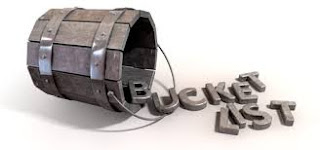I realized recently that I am, indeed, an emotional eater. I guess I've always known it, but I finally came to the analytical conclusion that it is true after consuming the following:
- One fairly large dark chocolate salted caramel (all natural ingredients)
- A glass and a half of red wine
- A handful of cashews
- Roughly two ounces of crunchy potato chips (fried in olive oil, naturally)
- A half cup or so of dark chocolate fake ice cream made from cashew milk (there seems to be a dark chocolate theme going on here)
- Another handful of cashews
- A handful of dark chocolate chunks (did I mention they were organic?)
That was my dinner...accompanied by five or six episodes of "Last Man Standing" reruns on Netflix.
What would drive a normally sane person to such behavior?
EMOTIONS.
When we get emotional - sad, angry, frustrated, aggravated, depressed - the emotions take over and the mind takes a "time out." I'm not really sure why that happens, but it does. And what emotions drive us to do is...well, anything comforting. Sometimes it's shopping, sometimes it's vengeance, and sometimes it's eating things that taste good.
The strange thing is that even though the mind takes a "time out" from control, it still knows what's going on, and while our emotions might control, our rational mind permits. Nothing gets put into the mouth that the brain does not think about and approve. When we fall off the wagon, or in some cases jump off, we give ourselves permission to eat what we know in our rational mind is bad for us. Here was my internal dialog, more or less...
- "This seems like a good time to eat that salted caramel in the drawer." One fairly large dark chocolate salted caramel (all natural ingredients)
- "I should cook something for dinner. [open fridge door, stare for a minute, close fridge] I think I'll have a glass of wine." A glass of red wine
- "I'm hungry. What looks like real food?" A handful of cashews
- "Still hungry, but probably shouldn't eat sugar. I know! I'll have some potato chips." Roughly two ounces of crunchy potato chips (fried in olive oil...naturally)
- "May as well just finish off this bottle of wine...there's just a half glass left. A half a glass won't hurt."
- "Too bad I didn't buy any real ice cream. I guess I'll have some of Mark's. Cashew milk isn't the same, but it has chocolate in it." (Not even bothering to try to rationalize by this time.) A half cup or so of dark chocolate fake ice cream made from cashew milk (there seems to be a dark chocolate theme going on here)
- [Still not satisfied...looking in pantry for ideas] Another handful of cashews
- "Okay, I guess I'm not really hungry any more, but now I need something sweet. Again. Dessert!" A handful of dark chocolate chunks (did I mention they were organic?)
Don't misunderstand. Emotions can be a useful ally, as long as they're not allowed to run the show. As a leader, they are notoriously volatile, unreliable, and unfaithful. They are, in a word, liars most of the time.
There are, of course, healthy emotions, but most of the time, our emotions work against our best interests...misplaced fear, anger, jealousy, envy, self-pity, depression, and so on.
Emotions, for the most part, are not our friends.
So how do we fight the battle of Emotions vs. Brain? And, yes, it is a battle. You RUN!
All the good advice in the world about how to make good decisions in the midst of emotional assault will only help you if you can figure out how to fight the battle. And you can't fight it. Not head-on, anyway.
In a head-on battle, emotions will ALWAYS win. You know that's true - you've had the same kind of conversations with yourself that I just related. Probably many. The brain turns to mush and does whatever the emotions tell it to do...every single time.
The only way to get the best of them is distraction. Emotions only have power over you when you focus on them. When you think about all the things that are bothering you, the problems seem to grow and multiply, out of proportion, until the only thing on your mind all the time is your problem, carefully developed and magnified from that proverbial molehill into a mountain by your faithless emotions.
By turning our focus away from the problem - doing something for another person, taking a walk and appreciating nature, calling up a friend and chatting (about them, not you and your problem), starting that project you've been thinking about doing, and so on - by refusing to give our emotions the attention they demand, by treating them like the spoiled child they resemble, by sending them to their room and ignoring them, we give ourselves the time we need to shrink the problem back to it's appropriate size, unencumbered by emotional baggage, where it can be dealt with by the rational mind in a rational way.
...So today I distracted my emotions by making chocolate chip cookies. Of course I used all natural ingredients-- einkorn flour, pure chocolate chips and organic brown sugar. I only made a half batch (see how responsible I'm being?) And, boy are they good!
And that thing I was annoyed about? Still there, but I'm feeling so much better now, and I'll figure out how to dealt with it another day.






